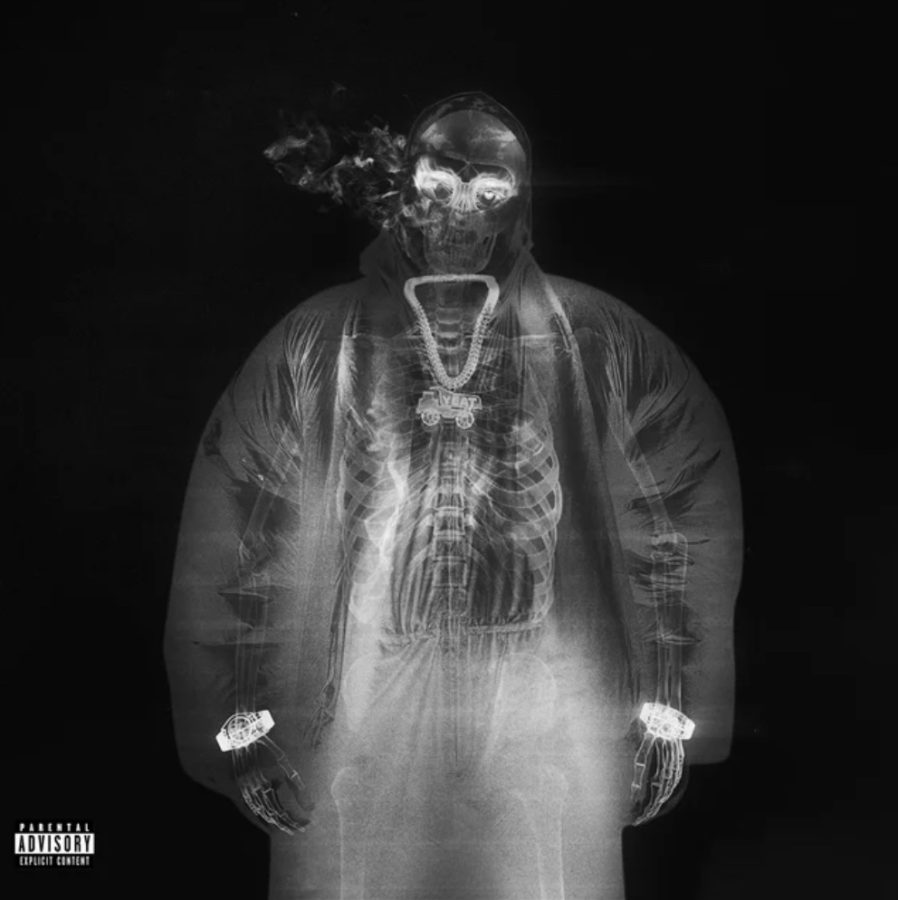Yeat’s ‘AftërLyfe’ review: rap’s next big star
March 13, 2023
Yeat’s new album “AftërLyfe” is a 22-track atmospheric head-bopper full of experimentation. As the underground artist makes his way into the mainstream, “AftërLyfe” features a bulk of Yeat’s signature sounds but also feels completely fresh, as he finds different ways to experiment and develop his unique sound.
AftërLyfe is a sequel to “Lyfë,” an EP released late last year to hold fans over until the album. Not only is “AftërLyfe” a sequel by name, but it shares many sonic similarities. Producer BNYX confirmed that the songs “Can’t stop it” from Lyfë and “Mysëlf” from AftërLyfe were originally one song with a shared melody.
A notable difference between “AftërLyfe” and previous Yeat projects is the features. Although the track list mentions Kranky Kranky and Luh geeky as featured artists, these are just alternative personas of Yeat, and the only true featured artist is Youngboy Never Broke Again—or NBA Youngboy—a shift from the feature-heavy projects Yeat usually releases.
The first track of the album “No morë talk” does a fantastic job of setting the tone for the whole project. The track’s instrumental starts with a dark, distorted synth that immerses the listener. Yeat’s rapping is some of his best as he goes on for almost four minutes straight. On my first listen, I couldn’t resist bopping my head to his clean flow and smooth delivery.
The second track “Shmunk” is another high-tempo track featuring NBA Youngboy. Yeat’s first voice switch happens here when he transitions from a mellow dark pitch to a higher one when he progresses from the chorus to the verses. This is one of the strongest aspects of Yeat’s music; his ability to implement different voices into his verses and mix his background vocals to add to the instrumentals, both a common trend throughout the album.
NBA Youngboy’s feature on here wasn’t anything special. It was a decent verse, not spectacular, but it did add some much-needed variety to this relatively long track.
The following track “Bëttr Off” also delivers unique vocals. The track starts off with pitched-up distorted backing vocals that come in and out throughout the track, while Yeat changes his tone and vocal inflections on his main vocals. Although lyricism isn’t a strong suit of Yeats’ music, he finds ways to incorporate clever lyrics in his songs.
One case is when he says “I’m not from this zone, I’m not from my home, I’m not from this planet, I’m high on life, my Glock talk to me, it told me, go blam it,” a nod to the video game High on Life by the creators of “Rick and Morty.”
Some of the more experimental tracks on the album are track five “Nun id change” and track seven “Now.” “Nun id change” is Yeat’s first attempt at tackling the jersey club craze that has engulfed Hip-Hop over the last several years. It’s a switch up from how the rest of the album sounds.
The track “Now” is my personal favorite, where the implementation of his voice shows its strengths. The way Yeat mixed his pitched-up chipmunk vocals to the repetitive calming instrumental sets a mood that I don’t think he could do with lyrics alone. He’s not a lyricist, and that’s something he embraced on this track.
Another highlight is on track 15 “Bad bënd / DëMON.” This is one of the best produced tracks on the album and is the only track that Yeat produced himself, which he mentioned on the song. “I feel like makin’ a beat, so I made me this beat.”
An issue with the album is that it feels bloated. Over twenty tracks with one feature is something that’s difficult for any artist to pull off, and Yeat is no exception. I would have loved to see him collaborate with more artists as he did on “2alivë” and “Lyfë.” The features on those projects were some of the best parts, and it’s disappointing that he opted to only feature one artist this time.
Additionally, some of the tracks fall flat and are forgettable. Tracks like “Watch” and “Type money” feel like recycled songs because of how similar they are to other tracks on the project. The project could have been shorter and more concise to be more accessible.
“AftërLyfe” is a great project that’s worth listening to if you want to discover some of the new sounds coming out of the underground rap scene. Although a bit excessive, there’s a lot here for fans of Yeat to gravitate towards. It’s his best project since “Up 2 Me,” and he’s refined his sound for mainstream audiences.








boshkalaybongbong • Oct 10, 2023 at 12:58 pm
yeat on top